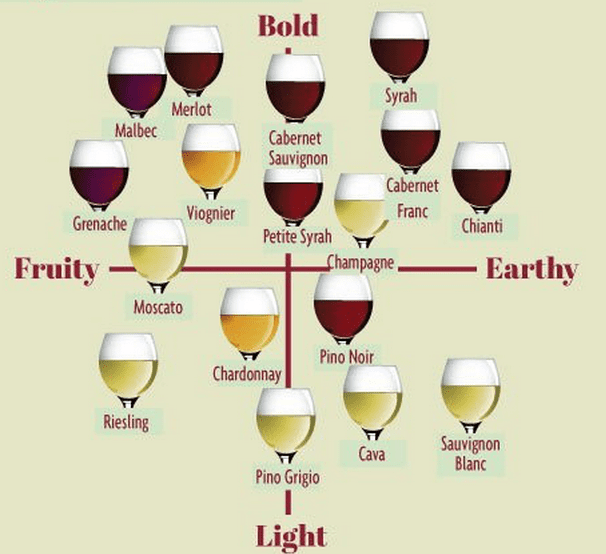General
The Beverage Clique LLP (TBCL) shall reserve the rights to amend the Terms & Conditions, course contents and/or prices at its sole discretion, without prior notice.
TBCL reserves the rights to change tutors, reschedule the course or combine classes.
Prices
All prices quoted/indicated are in Singapore Dollars.
All prices quoted / indicated are inclusive of registration, tuition fee (classroom or online), study materials, wines, spirits or sake for tasting, and one (1) examination (if applicable). Wines, spirits or sake are not included for tasting for online learning programmes unless otherwise stated.
Course Funding / Subsidy
Singaporeans and Permanent Resident of Singapore may qualify for course fee funding / subsidy for certain courses offered by TBCL.
The funding / subsidy are offered by SSG and/or e2i. All funding and subsidy are subject to terms and conditions by the respective agencies. Funding / subsidy are not applicable if the terms and conditions from SSG and/or e2i are not met.
For course funding / subsidy offered by SSG, candidates and/or organizations are required to pay the net fee only, after deducting the funding / subsidy portion of the course fee.
For course funding / subsidy offered by e2i, candidates and/or organizations are required to pay the full course fee. Upon successful completion of the course, TBCL will reimburse the funding / subsidized portion of the course fee to the candidates and/or organizations.
In the event the candidates and/or organizations fails to meet the terms and conditions required by SSG and/or e2i, TBCL have the rights to recover any fee that was deducted as the funding / subsidy portion of the course fees.
In the event there is an error in calculating SSG and/or e2i funding / subsidy, TBCL have the rights to recover any outstanding course fee from the candidates and/or organizations.
Attendance
Minimum attendance is required for Learners to complete the course of their choice. Documentary proof may be required for the period of absence, and Learners may be rescheduled AT THEIR OWN COST if they are unable to meet the minimum attendance requirement set by the various institutions.
Personal Information
The personal information collected in the application form will be used by TBCL to process your registration for course(s) and/or event(s).
Failure to provide any required information in the application may result in a delay in successfully registering your booking.
Your details will be kept confidential by TBCL and TBCL will not pass your information to a third party. Your details may be used to contact you and/or keep you informed of our events and courses. You consent TBCL to send you marketing, advertising, and promotional information through email, voice-call, text message and/or fax, in accordance to Personal Data Protection Act 2012 (PDPA).
A copy of your personal information / application form may be given to our accredited programmes partners for examination purposes. It is to confirm that you may have previously attended and passed any relevant examination(s) in order to qualify for the course(s) and/or examination(s) that you are applying for.
Our accredited programmes partners may contact you directly relating to the course(s) or any marketing advertisement. Please inform TBCL if you do not wish to receive any marketing or promotion advertisement from our accredited programmes partners.
Booking and Payment
Booking / Registration refers to a placing for a specific course / event.
Booking is only confirmed when payment is received in full with the completed registration form.
Completed registration form(s) can be submitted via the following: Online registration form found on respective course pages.
Once the registration form and payment are received, TBCL will issue an invoice/receipt to the applicant.
If an organization is sponsoring the applicant(s), the invoice shall be made attention to the company. The organization or applicant must indicate on the registration form if the invoice is required to make attention to the company.
The organization remains liable to pay the full course fees, even when the applicant(s) leaves the organization for whatever reason, prior the commencement of the course and/or during the course period.
Booking is not confirmed when the payment is not received in full and/or incomplete registration form.
Payment can be made in one of the following manner: a) Cheque (for companies – 10 working days in advance): payable to THE BEVERAGE CLIQUE LLP. b) Bank Transfer – Payee: The Beverage Clique LLP
Bank: OCBC
Swift Code: OCBCSGSG (Oversea-Chinese Banking Corporation Limited) Bank Code: 7339
Branch Code: 543
Account Number: 543124291001
For overseas transaction, please include an S$20/- bank fees.
Any outstanding amount remains payable upon billing, and will incur an interest of 2% per month.
Cancellation and Transfer
Once a booking is completed, cancellation will not be entertained. Any transfer of course and/or applicant must be requested via writing to TBCL. Any other form of communication will not be entertained.
The application to transfer the course or candidate will only be accepted if TBCL received the application fourteen (14) days prior the commencement of the course. If the application is approved, there will be an administrative charge of S$100 per course or per candidate for WSET® courses. For non-WSET® courses, the administrative charges will be $30 per course or per candidate.
If the application to transfer the course or candidate will requested less than fourteen (14) days, it will be subject to approval at the sole discretion of TBCL. If the application is approved, there will be an administrative charge of S$200 per course or per candidate for all accredited programmes. For non-accredited programmes, the administrative charges will be $50 per course or per candidate.
Should the candidate fail to turn up for the course, it will be deemed as the candidate wish to withdraw from the course. Full course fees will be forfeited.
TBCL has a “minimum 6 pax to commence course” clause and reserves the right to postpone or reschedule the course due to the minimum required number of candidates not being met.
TBCL reserves the right to cancel, reschedule or postpone the course in the event that the speaker is unable to turn up due to illness, accidents, emergency or disruption due to forces of nature.
Study packs / guides once dispensed will be considered sold and no refund will be entertained.
Complaints And Appeals
Complaints
Should there be any complaints in regards of our services, please contact the relevant Office using your registered email within the Enrolment Services Unit with the all supporting information i.e., relevant documentation, dates, locations, any witnesses at hand in written form to [email protected] . It is recommended to raise complaints as soon as possible because delays make it more difficult to investigate effectively.
You will receive an acknowledgement of your complaint by returned email within 3 working days and the outcome of the complaint by the accreditation body within 30 days of the initial acknowledgement via email and the outcome will be recorded in our system.
Appeals
If you believe the complaint has not been properly or fairly handled after the outcome, please submit an appeal within 5 working days of the receipt of complaint outcome with the following details:
- The reason of the appeal based on the complaint outcome
- Additional supporting information that was not included in the original complaint
- Provide the outcome you hope to achieve
Once we acknowledged the receipt of your appeal, please allow 40 days for the outcome via email.
Final reviews
Please file the further appeal within 5 working days from the outcome of the appeal with the same requirements including the grounds of final appeal, additional supporting document and desired outcome.
Please expect the outcome of the final review within 40 days and the outcome will be final.
Conflict Of Interest
As a regulated awarding organisation, it is required to identify to different accreditation bodies and assist in managing or monitoring actual, potential and perceived conflicts of interest (‘Conflicts of Interest’) involving both APP staff and students. This policy complements WSET’s conflicts of interest policy and works to safeguard the integrity of different academies and promote confidence in all accreditation bodies and The Beverage Clique’s processes and procedures.
This policy applies to all The Beverage Clique staff and students and to any individual acting on behalf of The Beverage Clique.
A Conflict of Interest exists where an individual has interests or loyalties that could adversely influence their judgement, objectivity or loyalty to all accreditation bodies or The Beverage Clique when conducting activities associated with qualifications.
Examples of Conflicts of Interest include:
- The assessment of candidates by an individual who has a personal interest in the result of the assessment for any or all individuals concerned;
- The invigilation of a WSET assessment by any individual involved in the delivery of training leading to the assessment;
- The coaching of candidates by any individual involved in the assessment of candidate scripts;
- The investigation of a non-compliance incident by someone who is unable to act impartially.
Some of these Conflicts of Interest are manageable and therefore acceptable. For example, if family member of one of The Beverage Clique’s educators or APP staff takes a qualification and exam through The Beverage Clique, or when an employee of The Beverage Clique, or of the accreditation body, takes a qualification through The Beverage Clique, we can notify the accreditation body in advance and work along to put in place measures to maintain the integrity of the exam.
Some Conflicts of Interest are not manageable and are not acceptable. For example, no mitigation efforts overcome the conflict created when an individual when a single individual serves as the educator and exam officer of an exam for a family member where an external invigilator is not available.
Any staff member or student of The Beverage Clique who becomes aware of a Conflict of Interest must inform the administrative of The Beverage Clique via [email protected] in written form as soon as possible. The Beverage Clique will inform the related accreditation body of the possible conflict of interest and will work along to put any protective or mitigating measures in place to manage the conflict on a case-by-case basis. If the conflict is determined not manageable, we, The Beverage Clique will inform any impacted APP staff or students.
Please note that the failure to declare a conflict of interest may have consequences for the student or The Beverage Clique because we are required to report conflicts to all accreditation bodies.
Consumption of Alcohol
Candidate(s) under the legal drinking age are not allowed to sample any alcohol in any course(s). However, it is not a barrier for any candidate to attend and complete some accredited programmes successfully.
Candidate(s), for religious, health or any other reason(s), who do not wish to sample any alcohol during the course, may do so.
Examination and Results (applicable to accredited programmes)
The examination date will be specific to the course the candidate registered for. Any request to change in the date of examination will only incur a charge similar to an examination re-sit fee.
Any candidate who did not turn upon the examination day will be deemed“Absent”with or without valid reasons (e.g. medical certificate). Should the candidate request for another examination day, it will incur a charge similar to an examination re-sit fee.
Candidate may re-sit for an examination, subject to an examination re-sit fee, should he/she fails the 1st examination. Candidate who has passed the examination may not re-sit for an improved grade.
At current,the re-sit fee is at S$250 per level 2 examinations & S$350 per level 3 examinations per person.
The candidate must show proof of identity, by form of identity card, driver’s license or passport to the management, facilitator, and/or examiner, on the day of examination. TBCL may not allow the candidate to sit for the examination if he/she fails to do so.
TBCL will send an email to the candidate notifying that results are released.Under no circumstances, the results will be communicated in other forms of communication.
Certificates & pins may be delivered via meetup upon request based on availability of TBCL staff and candidate.
Diversity And Equality
We, The Beverage Clique ensures that all students and prospective students pre/during/post course are treated equally, irrespective of race, colour, nationality, ethnic origin, sex, gender reassignment, sexual orientation, marital (including civil partnerships) or parental status, pregnancy and maternity, age, disability, religion and belief or socio-economic class or spent criminal convictions.
Should you have any question related to diversity and equality with us, please contact [email protected] or SSG Skillsfuture via https://www.skillsfuture.gov.sg/contact.
Malpractice And Maladministration
There are policies and procedures in place to protect all students and safeguard the integrity of the qualifications. The Beverage Clique ensures compliance with the policies through this Malpractice and Maladministration Policy, which gives a framework for both us and you to identify, report and manage potential malpractice or maladministration.
Non-compliance with the Policies and Procedures can fall into two distinct, but related, categories:
- Maladministration, where the non-compliance is generally unintentional, or the result of mistakes, carelessness, inexperience or poor processes; and
- Malpractice where the non-compliance is intentional or the result of a negligent or reckless action without consideration of the consequences of the action.
Context is important and the line between maladministration or malpractice is not always clear: for example, maladministration incidents may become malpractice (e.g. if you fail to implement corrective measures, repeat the same or similar incident, or attempt to misrepresent or hide information during an investigation); or there may be mitigating factors that turn potential malpractice into maladministration. Though malpractice and maladministration are distinct concepts, they can shade into one another. Malpractice and maladministration are always case, context and fact specific. Both APPs and students can commit malpractice and maladministration. There are many ways that malpractice or maladministration could occur, including new ways we have not seen yet. But some examples of malpractice or maladministration include:
For The Beverage Clique:
- Failure to adhere to each of the accreditation’s Policies and Procedures;
- Fraudulent claim for certificates/fraudulent use of certificates/reproduction or forgery of certificates;
- Revealing or sharing confidential exam materials with candidates ahead of an exam;
- Intentional attempts to manipulate exam results so that they do not reflect the candidate’s actual exam performance;
- Breach of confidentiality;
- Misleading advertising/publicity.
For students:
- Cheating, or facilitating cheating, including the use of unauthorised devices or materials;
- Disruptive behaviour in an exam;
- Plagiarism of any nature by students;
- Impersonation (including forgery of signatures);
- Unauthorised reading/amendment/copying/distribution of exam papers;
- Breach of confidentiality.
In general, it is expected that both The Beverage Clique staff and students should always treat others professionally and respectfully. We will treat inappropriate behaviour including verbal or physical abuse, persistent or unrealistic demands, or threats that cause stress to staff as misconduct and may report student misconduct as necessary.
Media
Images and videos captured during this event may be used in our website, social media, other publicity material or at other events and may be provided to the media for local or national publication.
If you do not wish to have images of yourself publish or used for such purposes, please inform us in writing.
Reasonable Adjustments
We want to make all assessments accessible for all students, so none are at an advantage or disadvantage based on a disability or differing ability. This policy and the reasonable adjustment process allows us, The Beverage Clique to work with you, our student, before an assessment to gather the information we need to submit a request to the related academy and work with them to make arrangements that give students access to their qualifications. A reasonable adjustment is any accommodation or arrangement that helps to reduce the effect of a known disability or difficulty that substantially disadvantages a student’s assessment. Using a reasonable adjustment does not impact how the academy grades your exam, or your result, but The Beverage Clique cannot agree to reasonable adjustments where your particular difficulty directly affects performance necessary to complete the assessment outcomes (e.g. inability to smell or taste for a Level 3 Exam). The goal of a reasonable adjustment is to give you equal access to the qualification, not to give unfair advantages over other students who take an assessment without the same adjustment, or to affect the overall reliability of the assessment outcomes that are explained in the course Specification. Examples of reasonable adjustments may be:
- Changing standard assessment arrangements, for example allowing candidates extra time to complete the assessment activity;
- Adapting assessment materials, such as providing materials in large text format;
- Providing access facilitators during assessment, such as a sign language interpreter or reader;
- Re-organising the assessment room, such as removal of visual stimuli for an autistic candidate.
The Beverage Clique will gather the information we need from you to submit a Reasonable Adjustment Application form to the accreditation body and wait for them to approve and arrange reasonable adjustments before the assessment activity takes place. Before completing enrolment with us, The Beverage Clique, we will give all students access to this policy and the chance to identify any special needs that could require a reasonable adjustment. If a student identifies a special need, The Beverage Clique will give the student the Reasonable Adjustment Application form as soon as possible and work with the student to gather the necessary information. For any student seeking a reasonable adjustment, please contact the administrative of The Beverage Clique via [email protected] with the followings:
- Your full name;
- contact information;
- description of the special need, disability or differing ability that requires an adjustment; and
- supporting documentation.
Please submit this information at least 40 working days before the exam date for any qualification. The information you submit will be shared with the corresponding accreditation body and will be handled under their Privacy and Data Protection Policy.
The Beverage Clique will keep records of all reasonable adjustment applications.
Special Consideration
Special consideration is any adjustment given to a student who has temporarily experienced an illness or injury, or other event outside of their control at the time of the exam that significantly affects their ability to take the exam or their ability to show their knowledge and understanding in the assessment. Special consideration is only for things that happen immediately before or during an exam that have a material impact on your, the student’s, ability to take the exam or on your performance.
To be eligible for special consideration, you must have completed the whole course and would have been fully prepared if not for the temporary illness, injury or other uncontrollable event. A special consideration may be for an individual (e.g. a student becomes ill the day of the exam) or a group of students (e.g. an exam is interrupted by a natural disaster). You may be eligible for special consideration if:
- Your performance on the exam is adversely affected by an event outside of your control. This may include temporary illness, temporary injury, bereavement or exam room conditions;
- Reasonable adjustments which were agreed in advance of the exam proved inappropriate or inadequate;
- The application of special consideration would not make a passing result and certificate misleading about the student’s ability to satisfy the qualification’s assessment criteria.
Applying for special consideration
If you have taken an exam, or your exam is immediately approaching, and you feel that you have a temporary injury or illness, or other uncontrollable event that has interfered with your ability to complete your exam, please contact the administrative of The Beverage Clique via [email protected] in written form as soon as possible. We, The Beverage Clique, will provide you with a Special Consideration Application Form, which must be completed and returned with supporting documentation within 3 working days after the effected exam. The information you submit will be shared with corresponding accreditation body and will be handled under their own Privacy and Data Protection Policy. If there has been serious disruption during an exam affecting a group of students, we, The Beverage Clique, will submit a detailed report of the circumstances and candidates affected to request a special consideration.
The Beverage Clique will keep records of all applications for special consideration.











